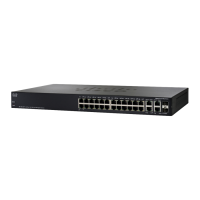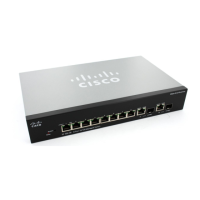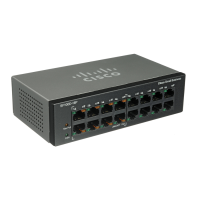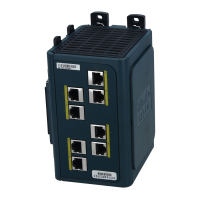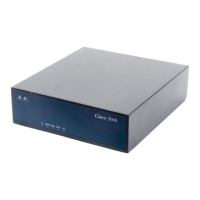Security: 802.1X Authentication
802.1X Configuration Through the GUI
Cisco Small Business 200, 300 and 500 Series Managed Switch Administration Guide (Internal Version) 397
19
- If the port state changes from Authorized to Not Authorized, the port is
added to the guest VLAN only after the Guest VLAN timeout has expired.
• Traps—To enable traps, select one of more of the following options:
- 802.1x Authentication Failure Traps—Select to generate a trap if 802.1x
authentication fails.
- 802.1x Authentication Success Traps—Select to generate a trap if
802.1x authentication succeeds.
- MAC Authentication Failure Traps—Select to generate a trap if MAC
authentication fails.
- MAC Authentication Success Traps—Select to generate a trap if MAC
authentication succeeds.
• When the switch is in Layer 2 switch mode:
- Web Authentication Failure Traps—Select to generate a trap if Web
authentication fails.
- Web Authentication Success Traps—Select to generate a trap if Web
authentication succeeds.
- Web Authentication Quiet Traps—Select to generate a trap if a quiet
period commences.
When the device is in Layer 3 router mode, the VLAN Authentication Table
displays all VLANs, and indicates whether authentication has been enabled on
them.
STEP 3 Click Apply. The 802.1X properties are written to the Running Configuration file.
Defining 802.1X Port Authentication
The Port Authentication page enables configuration of 802.1X parameters for each
port. Since some of the configuration changes are only possible while the port is
in Force Authorized state, such as host authentication, it is recommended that you
change the port control to Force Authorized before making changes. When the
configuration is complete, return the port control to its previous state.
NOTE A port with 802.1x defined on it cannot become a member of a LAG.
To define 802.1X authentication:
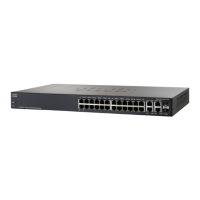
